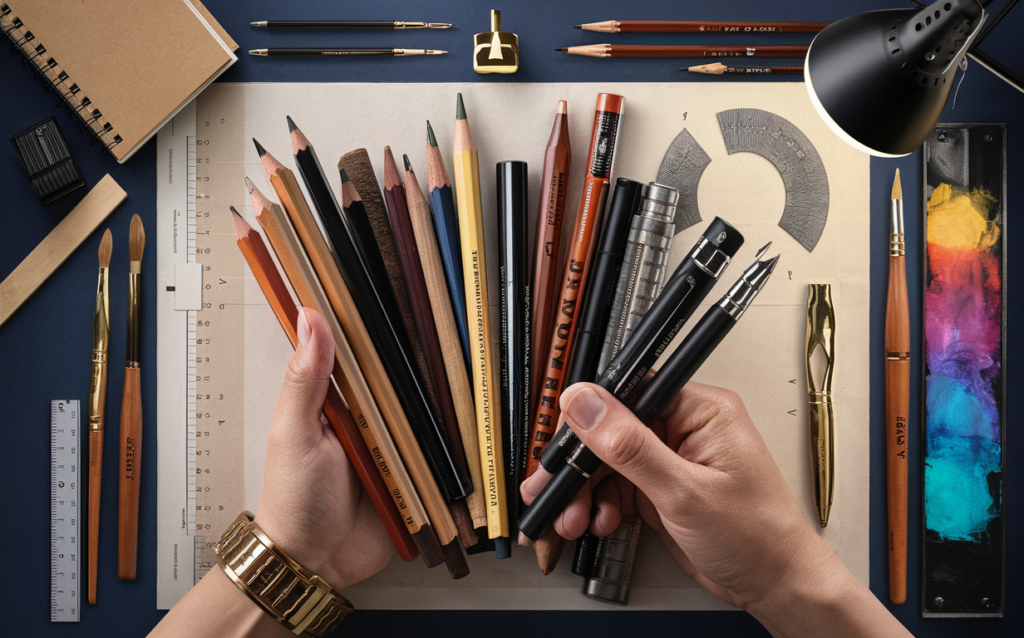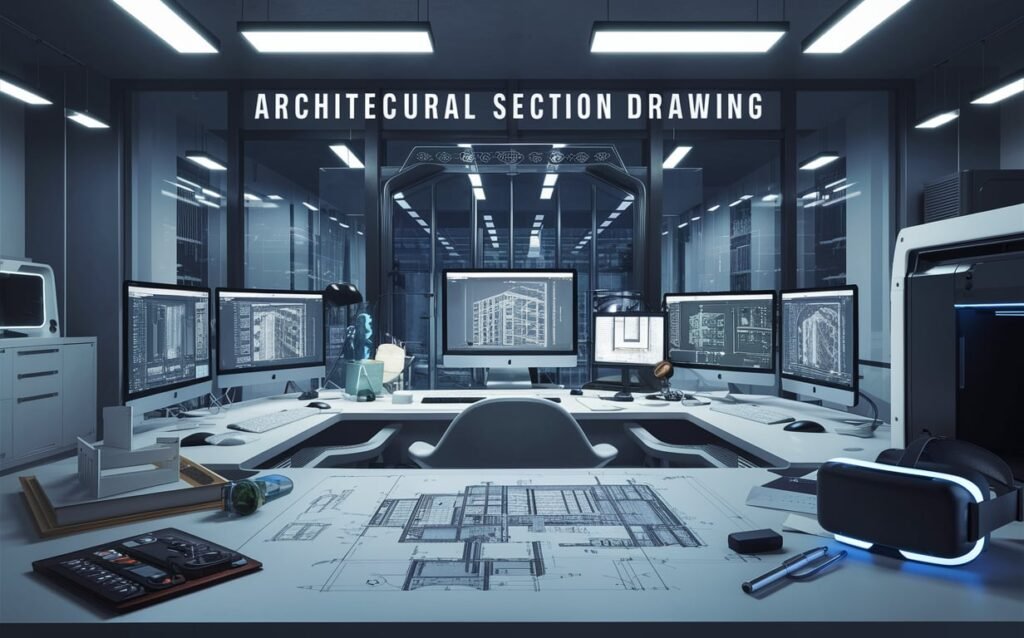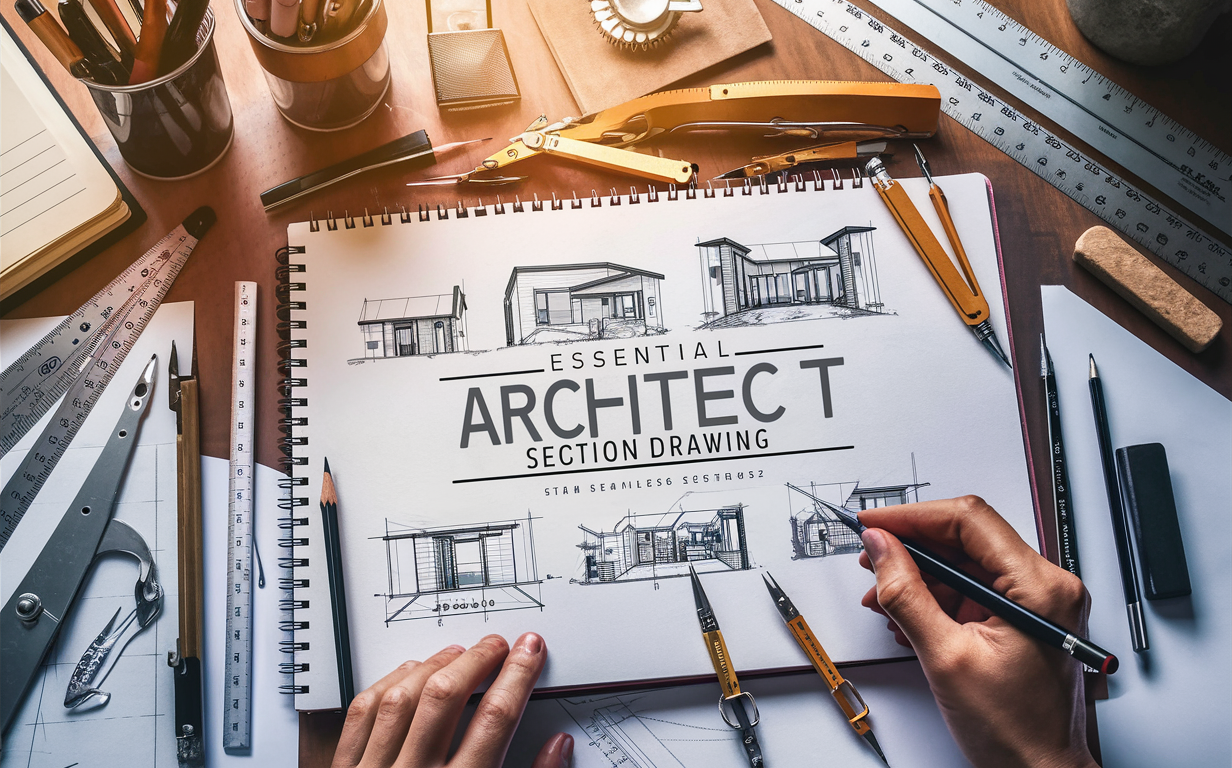Architect Section Drawing is crucial in architecture as it offers a detailed vertical cut-through view of a building, helping to understand structural relationships, design elements, and spatial configurations.
The goal is to equip architects with essential tools, including “Architect Section Drawing,” ensuring they have the resources needed to succeed in their projects.
What are Essential Drawing Tools?
1. Drafting Table
The “Architect Section Drawing” is crucial for ensuring a stable work surface, providing detailed insights and precision essential for construction and design accuracy.
When selecting tools for an Section Drawing, look for features such as adjustable height and angle flexibility.
2. T-Square
An Section Drawing plays a critical role in ensuring straight lines and accurate measurements, providing detailed cross-sectional views that help in the precise construction of buildings and structures.
For an Architect Section Drawing, choose wood for its warm aesthetics and metal for its high durability. Both materials offer unique benefits based on your project’s needs.
3. Triangle Set
Crucial for drawing precise angles and geometric shapes, Architect Section Drawing enhances the accuracy and detail required in architectural designs, ensuring professional and meticulous project execution.
In an Architectural Section Drawing, you may encounter various triangle types, including 30/60 and 45-degree triangles, essential for accurate angle measurements in design plans.
4. Scale Ruler
Discuss its function in converting real measurements to scaled-down drawings in an Architectural Section Drawing. It ensures accuracy, providing a detailed visual representation of the design elements and spatial relationships.
Various scales, including architectural and engineering, are available for your projects. For precision in your Architect Section Drawing, these scales ensure accuracy and clarity in every detail.
5. Mechanical Pencils
Advantages over regular pencils: enhanced precision and reliability, especially crucial for **Architect Section Drawing** tasks, ensuring accuracy and consistency in detailed architectural plans.
When creating an architect drawing, selecting the preferred lead sizes is crucial. Choose softer leads for shading and details, while harder leads ensure sharp, precise lines.

Advanced Tools for Architect Section Drawing
6. Adjustable Triangle
The Section Drawing allows for flexibility in angle adjustment, enabling precise modifications for intricate and complex drawings. This enhances accuracy and detail in your architectural projects.
Here are tips for selecting high-quality models: Ensure precision in details, verify dimensional accuracy, and cross-reference with an Architect Section Drawing for the best results.
7. French Curves & Flex Curves
Architectural Section Drawing is essential for accurately depicting smooth curves and non-linear sections, ensuring clarity and precision in the detailed representation of architectural designs.
How to use Architect Section Drawing effectively for consistent results: Understand the layout, follow detailed measurements, and ensure accuracy in every step for a professional and precise outcome.
8. Set Squares with Bevel Edges
Additional use cases include the Architectural Section Drawing, which provides detailed cross-sectional views of structures, enhancing understanding beyond typical triangles. This ensures precision in architectural planning and execution.
Benefits of beveled edges in an Architect Section Drawing: preventing smudging, enhancing precision, resulting in clearer and more accurate representations that aid in better visualization and understanding of the design.

Digital Tools
9. CAD Software (e.g., AutoCAD)
Transition from manual tools to digital platforms enhances accuracy and efficiency. Adopting Architect Drawing software ensures precise details, streamlined workflows, and better collaboration in your architectural projects.
Key functionalities beneficial for Architectural Section Drawing include layers, scaling, and 3D modeling. These features streamline the process and enhance the accuracy of detailed section drawings.
10. Graphic Tablets & Styluses
Incorporating an Architect Section Drawing into your workflow ensures enhanced control and detail, leading to more precise planning and execution of architectural projects.
Various options are available, suitable for beginners to professionals, to master Architect Drawing techniques.
Conclusion
Recap of discussed tools, emphasizing their necessity, particularly the Architect Section Drawing, vital for accurately visualizing design details and ensuring the project meets all specifications and standards.
Investing in quality instruments for creating precise Architectural Section Drawings significantly enhances productivity and accuracy, ensuring your projects are executed with the highest professional standards.
FAQs
Relevant Articles
- 10 Successful Architectural Section Drawings by Architects by illustrarch.com
- Architecture 101: What Is a Section Drawing? by architizer.com
- Architectural Drawings by archello.com
- Plan, Section, Elevation Architectural Drawings Explained by www.archdaily.com
- Section drawing – Designing Buildings by www.designingbuildings.co.uk
- Plan Section And Elevation In Architecture… For Beginners by archimash.com
- 8 Types of Architectural Drawings by www.projectmanager.com
- Studying the “Manual of Section”: Architecture’s Most Intriguing Drawing by www.archdaily.com
- The Perfect Drawing: 8 Sensational Sections That Raise the Bar for Architectural Representation by architizer.com
- 3D Exhibition Booth Design: Step-by-Step Guide by https://harfunguru.com





